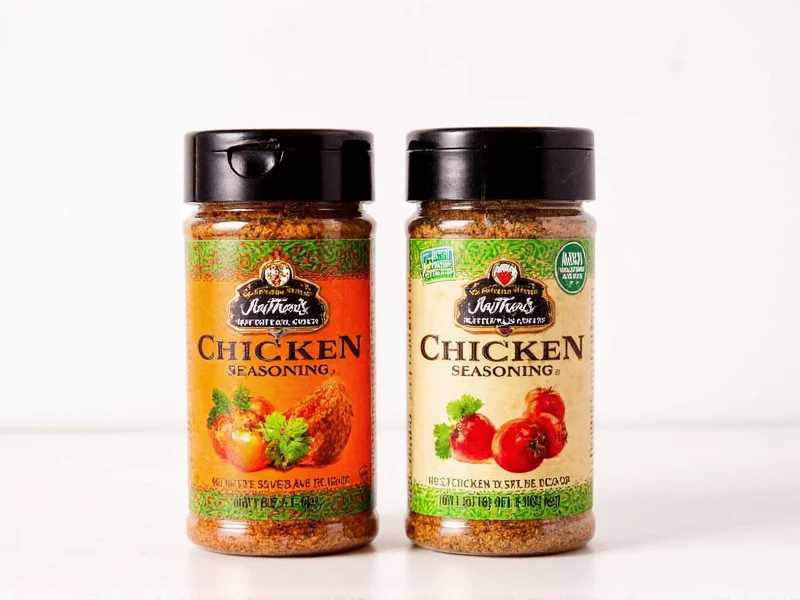Creating exceptional chicken dishes starts with understanding seasoning science. While many home cooks reach for pre-made blends, mastering the fundamentals of chicken seasoning unlocks consistent, restaurant-quality results regardless of cooking method. This guide reveals the culinary principles behind effective chicken seasoning, moving beyond generic spice lists to explain why certain combinations work and how to apply them properly.
The Science Behind Effective Chicken Seasoning
Chicken's mild flavor profile makes it an ideal canvas for seasoning, but its composition requires strategic approach. The protein structure of chicken breast, particularly, benefits from proper salting techniques that enhance moisture retention. When salt penetrates the meat, it alters protein structures, allowing them to retain more water during cooking—a process called dry brining. This scientific principle explains why simply sprinkling salt immediately before cooking yields inferior results compared to提前 seasoning.
Essential Components of Perfect Chicken Seasoning
Professional chefs understand that great seasoning isn't about complexity but balance. The most effective chicken seasoning formulas incorporate these five fundamental elements:
| Component | Function | Best Options |
|---|---|---|
| Salt | Flavor enhancer and moisture regulator | Kosher salt, sea salt |
| Pepper | Complexity and subtle heat | Freshly ground black pepper |
| Garlic | Savory depth (umami) | Garlic powder (more stable than fresh) |
| Onion | Sweetness and aroma | Onion powder |
| Paprika | Color and mild heat | Sweet paprika, smoked paprika |
Building Your Signature Chicken Seasoning Blend
While the basic five-component formula works for most applications, customization creates distinctive results. Consider these professional adjustments based on cooking method and desired outcome:
For Grilled Chicken
The best seasoning for grilled chicken incorporates smoked paprika (½ teaspoon per pound) and a touch of cayenne (⅛ teaspoon) to complement char marks. Add 1 teaspoon of dried thyme for herbal notes that withstand high heat. Apply this dry rub 2 hours before grilling to allow flavors to penetrate without drawing out moisture.
For Baked or Roasted Chicken
When seasoning chicken for baking, increase the salt content slightly (1½ teaspoons per pound) as oven cooking draws out more moisture. Incorporate dried rosemary (½ teaspoon) and a pinch of dried sage for earthy notes that develop beautifully during slower cooking. For crispy skin, rub seasoning under the skin as well as on the surface.
For Healthy Preparation Methods
Healthy chicken seasoning ideas focus on maximizing flavor without added fats. Lemon zest (1 teaspoon per pound) combined with dried oregano creates bright, Mediterranean-inspired profiles. For low-sodium options, increase use of acid components like lemon juice or vinegar in finishing, as acids enhance perception of saltiness without additional sodium.
Timing Matters: When to Apply Chicken Seasoning
Professional kitchens follow precise timing protocols for seasoning chicken:
- Dry brining: Apply salt 12-24 hours before cooking for maximum moisture retention and flavor penetration
- Basic seasoning: Apply complete spice blend 30-60 minutes before cooking for optimal flavor development
- High-heat methods: For grilling or pan-searing, apply seasoning 15 minutes before cooking to prevent burning of sugar-containing spices
- Finishing touches: Add delicate herbs like parsley or cilantro after cooking to preserve freshness
Avoiding Common Chicken Seasoning Mistakes
Even experienced home cooks make these seasoning errors:
- Overlooking moisture content: Wet spices (like fresh garlic) can cause steaming rather than browning—use dried versions in initial seasoning
- Incorrect salt measurement: Too little salt won't penetrate; too much creates surface bitterness—use 1 teaspoon kosher salt per pound as starting point
- Seasoning only the surface: For bone-in pieces, gently loosen skin and season directly on meat
- Applying sugar-containing rubs too early: Brown sugar or honey in rubs will burn during long cooking—add these in final 15 minutes
Creating Custom Blends for Different Cuisines
Understanding regional spice traditions helps create authentic flavor profiles. The best herbs for chicken seasoning vary dramatically by cuisine:
- Mediterranean: Oregano, thyme, lemon zest, garlic—perfect for chicken baked with vegetables
- Mexican: Cumin, chili powder, coriander—ideal for chicken fajitas or tacos
- Asian: Ginger, five-spice powder, sesame—works well for stir-fried chicken dishes
- Indian: Turmeric, garam masala, cardamom—creates flavorful bases for curries
When developing your homemade chicken seasoning recipe, start with the basic five-component foundation, then add 1-2 distinctive spices representing your target cuisine. This approach ensures balanced flavor without overwhelming the chicken's natural taste.
Practical Application Tips
For consistently excellent results when seasoning chicken:
- Pat chicken dry before seasoning to ensure proper adhesion
- Use your hands to distribute seasoning evenly, especially in crevices
- For bone-in pieces, season under the skin for direct meat contact
- Let seasoned chicken rest uncovered in the refrigerator to dry the surface for better browning
- Reserve 10% of your seasoning blend to finish dishes after cooking for brighter flavor notes











 浙公网安备
33010002000092号
浙公网安备
33010002000092号 浙B2-20120091-4
浙B2-20120091-4